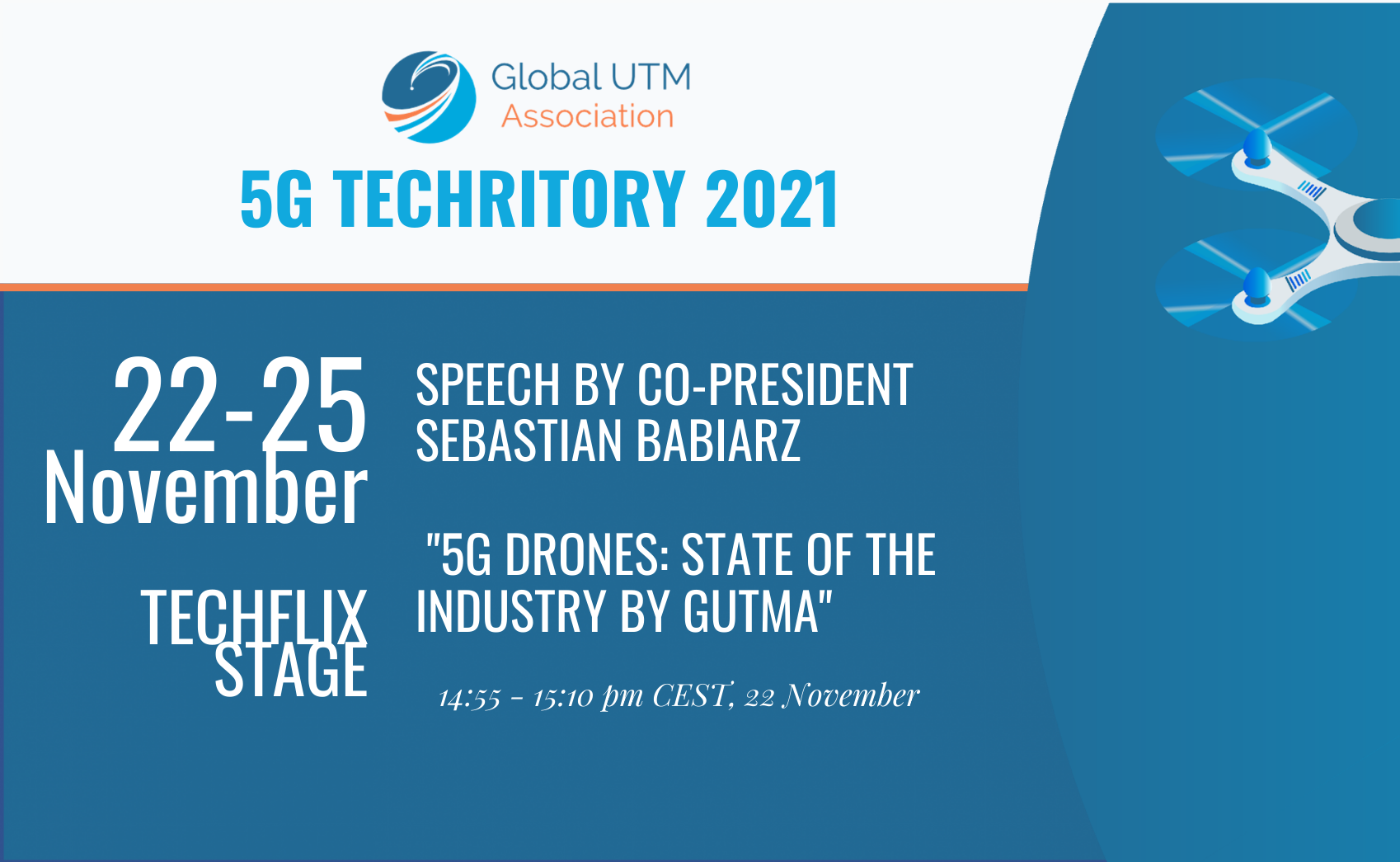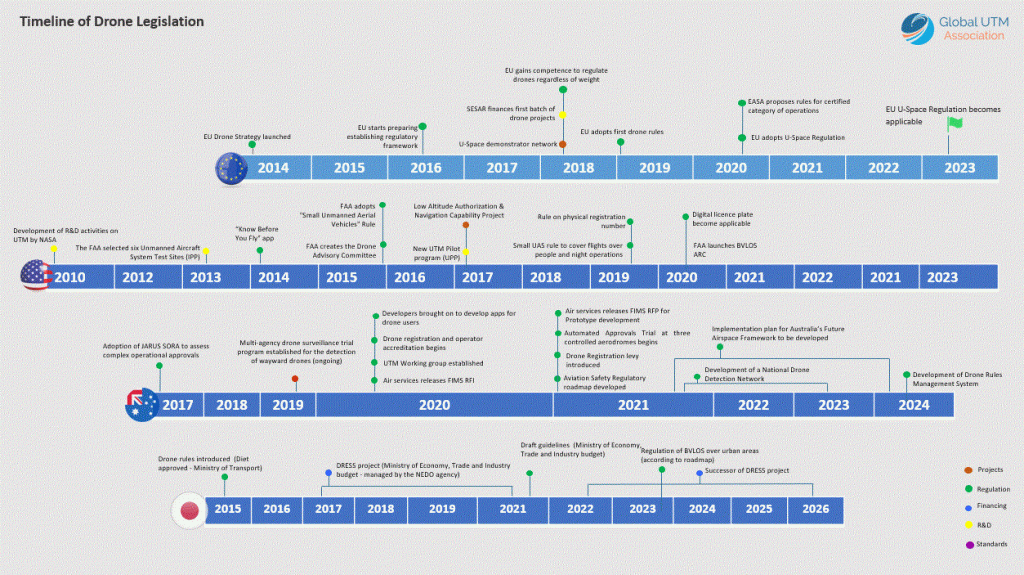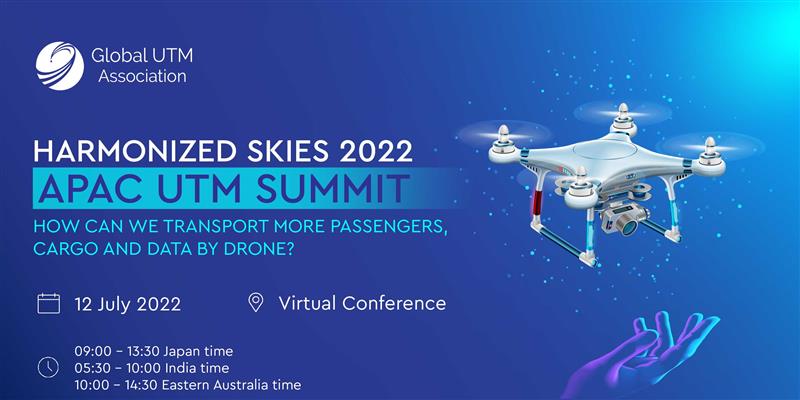
We talked to Don Berchoff, CEO of TruWeather Solution, about his vision on the industry challenges and involvement in GUTMA
“The industry requires even more low altitude weather measurements to increase data fidelity and flights per airframe. Without this, uncertain micro weather and wind conditions will result in conservative business decisions and unnecessary risk safety.”
What is TruWeather and what is its role and involvement within GUTMA?
TruWeather Solutions is a leading provider of weather data analytics and innovative weather risk management products provided through TruWeather’s V360 platform. Founded on over 40 years of experience across the aviation, logistics and weather industries, and acknowledged as experts in setting standards for the safe operation of Unmanned Aircraft Systems, the company provides the highest quality insights alongside excellent technical and operational forecasting support services.
TruWeather provides GUTMA with deep expertise in emerging science, technology, weather systems and services to reduce the risk of micro-weather hazards for remote pilot and airspace management operations. TruWeather advises on best methods for integrating the right mix of governmental and third party weather supplemental data services and making those services discoverable and in compliance with regulations and standards.
Trustworthy science is a core principle of TruWeather’s business model along with a deep understanding and expertise in the aviation systems they are serving. TruWeather will bring real world aviation weather operations expertise, experience, and wisdom to GUTMA and work with regulators, leveraging ASTM F38, to provide uniformity in weather regulations across the globe to employ safe and efficient operations. As a U-space service provider (USSP), TruWeather will communicate the great work of GUTMA to their vast industry networks.
According to you, what are the biggest industry challenges at the moment?
Weather will become the long pole in the ecosystem when all other systems and regulatory issues are resolved. The biggest challenge from the Weather perspective is having UAS ecosystem stakeholders acknowledge, advocate, and articulate the need for better weather services to scale BVLOS safely and efficiently. TruWeather has a deep aviation weather pedigree and is focused on enabling the success of the UAS industry. They are committed to ensuring weather is not the long pole hurdle when operations scale and communities begin to focus on the risk weather poses when a pilot is not on the airframe. TruWeather strives to stay ahead of the curve to bring new technologies and science to operations and get ahead of the BVLOS weather risk curve to support the growth of the UAS industry. TruWeather believes regulators are recognizing the scope of the weather challenge. Regulators are working with ASTM F38 to allow the integration of non-traditional weather sensors to support the sector’s exponential growth while retaining the highest standards of safety and accountability. Getting attention to this issue now is important because leveraging significant improvements in weather sensor technology, data fusion, models, and decision services; will take investment and time. Without the focus and the investments on this issue, the current aviation weather service will not meet the call, and the industry will not operate as efficiently or safely until better weather systems are in place.
A word about the need to be working along the full ecosystem/value-chain?
The weather system solution will require a fully integrated system-of-system that includes sensors, models, decision insights and aviation meteorologists that operate seamlessly and is easily discoverable for operators and airspace managers to gain the full value. This will require contributions of weather data from a host of government and private sector providers, drones themselves and Internet-of-Things sensor devices to close the weather measurement gap affordably. TruWeather uses crowd-sourced micro-weather data and work with leading partners in the industry, fielding a network of networks to close the low-altitude weather measurement gaps that weather satellites and radars cannot adequately provide today; nor will in the foreseeable future. Working with a full ecosystem of partners, they will build a “vertical V360 view” of the low-level atmosphere.
ABOUT DON BERCHOFF
Don Berchoff is the CEO of TruWeather Solution. Don is a highly successful military leader and business entrepreneur. He has 40 years-experience in weather, aviation, and logistics, during which he designed, built, and led regional and global aviation weather operations centers. Don earned “non-rated” crewmember wings flying over 300 hours as an Airborne Meteorologist, contributed to the development of the FAA NEXGEN Weather CONOPS in 2005, and led all logistics and ground operations at Manas Air Base, Kyrgyzstan (2007-2008.) As a Senior Executive Service member, he led the NWS Science and Technology Directorate (2008-2012). Furthermore, he was responsible for the transition of over $500M in new S&T infrastructure and software applications into NOAA operations. This experience informs his efforts to seek out the best weather science and technology for the UAS industry. His focus is to accelerate novel low-altitude weather sensing technology, including using drones as a sensor, and the quality of low-altitude micro-weather predictions to improve UTM airspace management and deconfliction decisions and increase operator business effectiveness and profitability. Don is the technical lead for the ASTM F38 Weather Supplemental Data Service Provider group developing weather specifications for UAS Traffic Management and Advanced Air Mobility systems.
ABOUT TRUWEATHER SOLUTIONS
Don and the TruWeather team are delivering on a 4-year promise to reduce micro-weather uncertainty for Beyond Visual Line of Sight (BVLOS) operations, with a focus on over-the-horizon, hard-to-detect weather hazards. TruWeather’s efforts seek to replace the loss of the “human sensor”, the pilot, on board the aircraft and increase airframe revenue generation and effectiveness when weather is marginal for operations. TruWeather is accelerating the deployment of novel low-altitude weather sensing technology through two NASA “urban weather sensor testbed” projects in Hampton, VA, and the deployment of the regular operations of the first-ever commercial weather drone in Grand Forks, ND. These sensors, coupled with TruWeather’s micro-weather services, are already improving the quality of low-altitude micro-weather hazard detection and alert notifications to enhance operator and airspace management safety.
Follow Don Berchoff and TruWeather Solutions on their Social Media:
https://www.linkedin.com/company/truweather-solutions/















